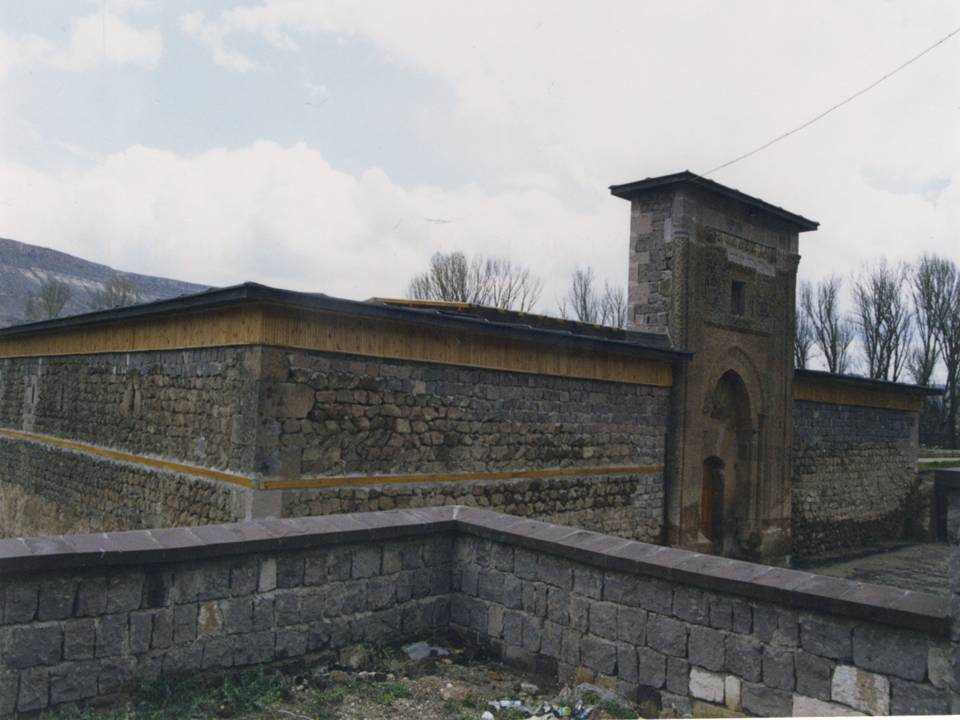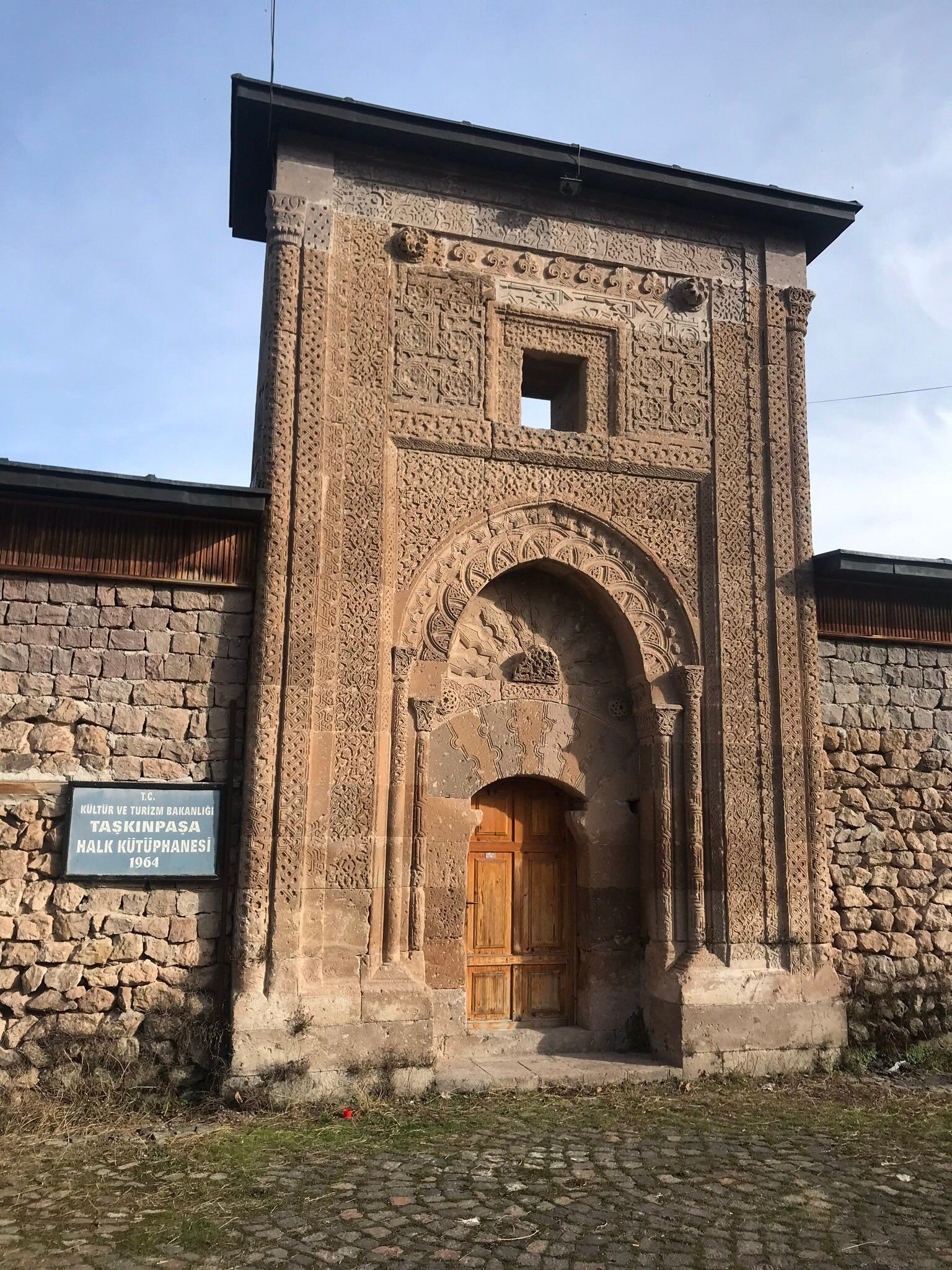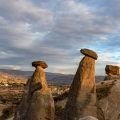The Taskinpasa Madrasa and Complex is located in the village of Damsa, 20 km south of Urgup, along the Urgup-Soganli road. The complex was established by the Karamanid Dynasty and features a madrasa, mosque, summer masjid, cupola, and open tomb within a courtyard wall.
The exact date of construction is not known, but it is estimated to have been built in the mid-14th century based on the dates of the tomb and sarcophagi found on the site. The madrasa measures 22.6 meters by 23.8 meters and at least two stories existed, although the upper storey has collapsed.
The stonework on the portal on the western side of the mosque is in classical Seljuk style and the mescid to the right of it features both geometrical and floral motifs that are seen especially well in its mihrab. The cupola to the east of the mosque was likely built by Taşkın Pasha and features a two-story structure cut from stone with an octagonal pulley inside and a pyramidal cone on the exterior.

The Hızır Bey Tomb, located northeast of the mosque, was built between 1350 and 1355 and features hexagonal open tombs on the outside made from connecting six pillars with pointed arches. One arch on the south facade features zencerek motif columnar capitals, stalactite pendentives, and openwork hovel motifs. The interior of the building has three rows with muqarnas stones and a dome, and there are three marble coffins and geometric star crossings on two of its rows.
To get to the Taskinpasa Madrasa and Complex, you can take the Urgup-Soganli road and look for the signs pointing towards the village of Damsa. The complex is located along the road and can be easily accessed by car or public transportation. Once you arrive at the complex, you can explore the various buildings and structures within the courtyard wall, including the madrasa, mosque, cupola, and open tomb.
Overall, the Taskinpasa Madrasa and Complex is an impressive example of Seljuk architecture and a must-see for anyone interested in the history and culture of the region. Its unique features, including the stonework on the portal, the cupola, and the Hızır Bey Tomb, make it a fascinating destination for tourists and history buffs alike.




